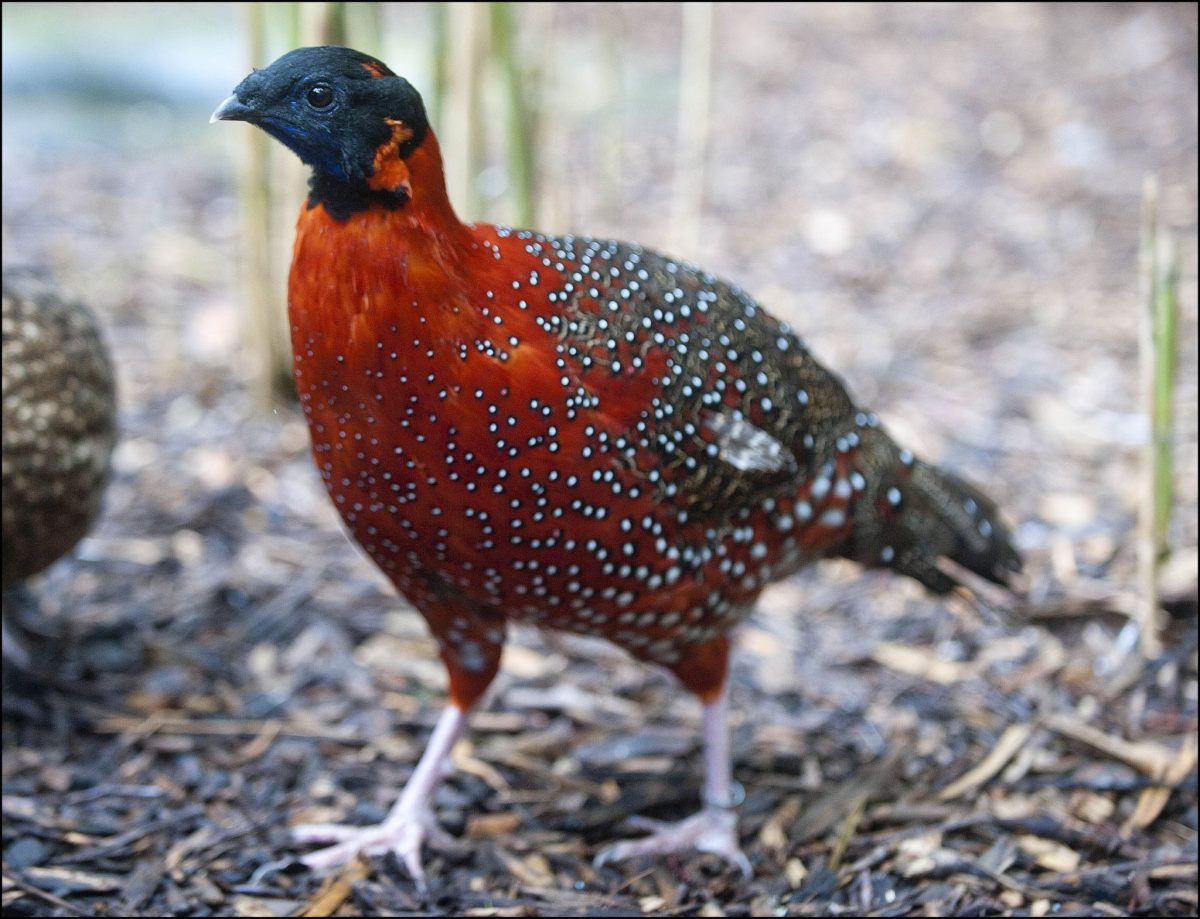Factfile
Where they live
central Asia in Nepal, India, Bhutan and China
Habitat
forests
Size
60-72cm in height
Weight
1-2.1kg
Lifespan
5-10 years
Threats
in decline due to extensive habitat loss and degradation and hunting pressure
Did you know...
- The Satyr tragopan is so called because of the satyr-like horns created from the head plumage
- These horns of feathers and the bright colours play an important role in the males elaborate mating display
- Females are drab in appearance compared to the brightly coloured males; this serves as camouflage, especially when nesting
More about satyr tragopans...
The satyr tragopan, also known as the crimson horned tragopan, is a member of the pheasant family which is found in the damp rhododendron and mixed forest of the central and eastern Himalayas.
In the breeding season they are often found living between 2000 and 4250 metres above sea level.
The tragopan is omnivorous feeding on insects, leaves, seeds and the shoots of new vegetation.
Unlike most pheasants, which are predominantly ground living, satyr tragopans spend a considerable amount of their time in the trees even building their nests there.
Tragopans are monogamous and spend the year in pairs.
An elaborate courtship display by the male attracts the female to him, and after mating, the female lays 3-5 eggs which are incubated for approximately 28 days.












